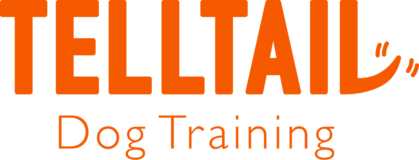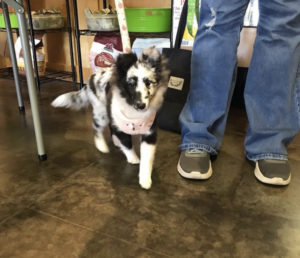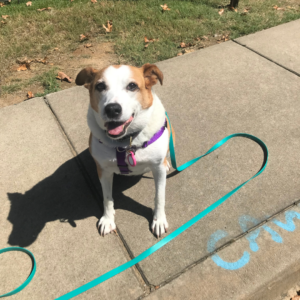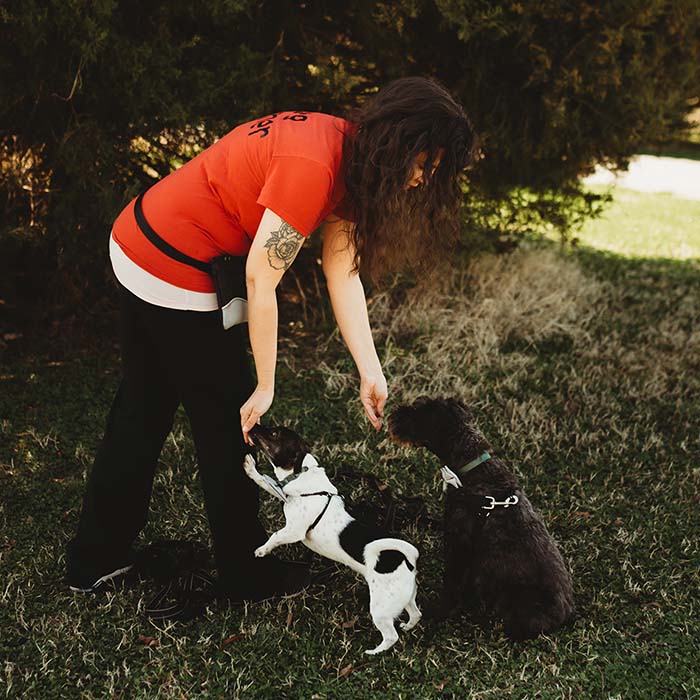Embarrassed: We Got a Handful
Medication, agility, and capturing went a long way with this pup
This is the third installment of Embarrassed, a three-part podcast series. The first part can be found here. The second is here. And instead of an e-book, this will be available in the Telltail Dog magazine, a client-only perk hitting homes in December.
Dawn Heiderscheidt and her husband, Mark, started looking for a dog as soon as they bought their house five years ago.
They ended up with a bit more than they’d bargained for, and embarrassment became a regular part of Dawn’s life as she got yelled at, kicked out of dog parks, and suffered injuries.
They’d wanted Magnus, an older dog. Since Dawn had grown up with animals, and Mark had less experience, they’d decided an older dog would be a good first dog, having grown past the puppy stage. Magnus was adopted, but the rescue told them that they had the perfect fit for them, the dog that they would rename Odin. “We always knew we wanted a dog,” Dawn shared. “Mark always grew with dogs but he never really did the dog training and interaction. I’ve always had pets. I’ve worked with horses, dogs, cats, hamsters, … you name it, I probably was near it at some point in my life. We both knew that dogs were always going to be in our life. We knew we couldn’t get one until we had a house. We’ve had this house for five years, we’ve had Odin for four and a half. We pretty much got Odin right when we bought the house because we knew we were ready for it.”
She saw the video of him playing with another dog and wanted to meet him, but they were about to leave on a trip to India. “I said, ‘This is fantastic, we would love to pay whatever adoption fees we can, but can you hold onto him for two, two and a half weeks?’” Dawn remembered. “They said no.”
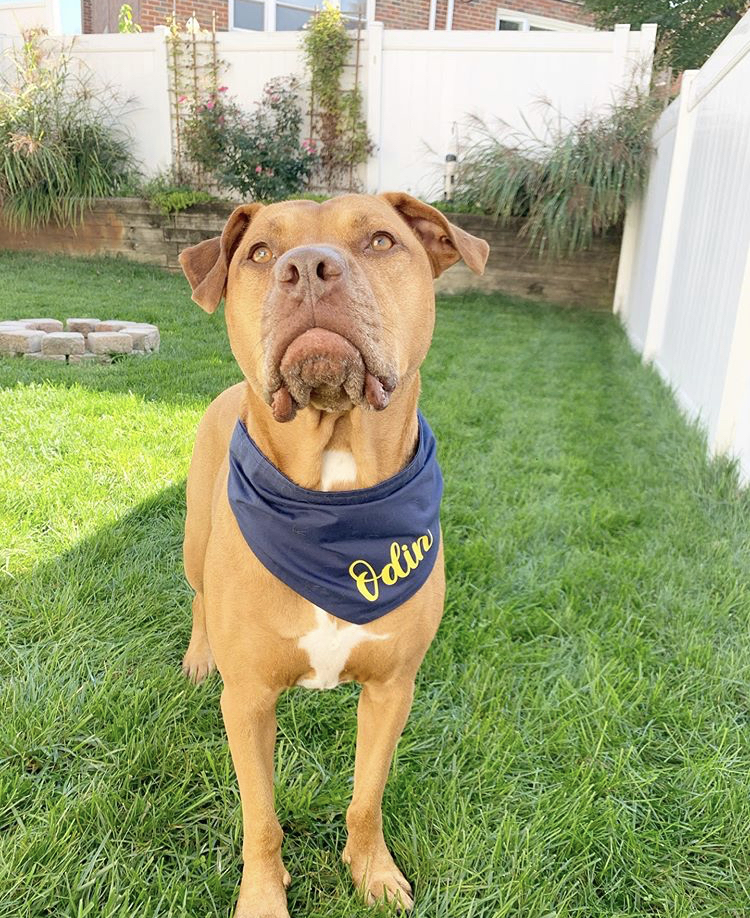
Now, Dawn recognizes the signs that led to a pressure-based decision. “They totally guilted us into it,” Dawn said. “Any dog owners listening, don’t do it. You want to save the dogs. You want to rescue them. But if you’re feeling like a rescue is pushing for you to take a dog and you’re not ready, don’t do it.”
She gets why it happens. “They’re trying to save two dogs,” Dawn explained. “If they can get one out, then they can rescue another dog from the streets. And I totally understand that. Rescues strongarm you. You have to know what you want and what kind of dog you’re getting. You really have to be smart about it because we got handed a handful.”
The rescue, which worked with a shelter, informed her that they had no available fosters. They suspected that Odin had been used as a bait dog or was at risk of being used as a bait dog if they didn’t take him. “We kind of scrambled,” Dawn explained.
They found someone who could watch Odin for the two weeks they would be out of the country, and when they got back, she handed Dawn the leash and said, “He’s a lot of dog.”
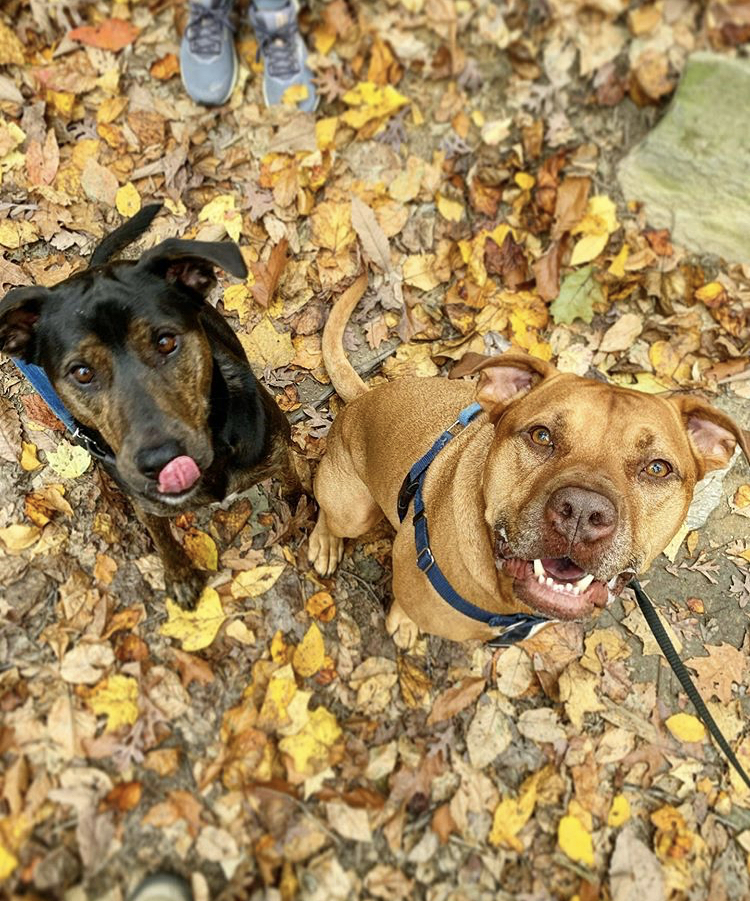
Dawn laughed at first. Then, as she started to spend time with Odin, she realized what that meant. “Odin just never shut off,” Dawn explained. “[He had] nonstop energy … We would wake up at five am, I would play soccer with him in our little backyard. Kick a ball around, let him chase it, let him rip it apart. We went through hundreds of soccer balls. Mark would then wake up, take care of him for an hour and a half, I would go to work, Mark would come home at lunch to actually walk him, I would get home around 3:30, I would play with him from 3:30 to 5 when Mark got off of work, and then we were playing with this dog from 5 to 10 o’clock. Training, playing, running, jumping, skipping. You name it, we were doing it. We were like, ‘Why does he not stop moving?’”
They thought they were getting a three-year-old dog. Then they took him to the vet. “He’s 10 months,” Dawn shared. “We went from wanting a six-to-eight-year-old dog, thinking we were getting a three-year-old dog, because that’s what the rescue told us, to going to take him to the vet and the vet going, ‘Oh, I think I see some puppy teeth. He must be like 10 to 12.’ … The one thing I knew was that I did not want a puppy, and I definitely didn’t want a puppy in their adolescent years, because I wanted to at least think they were cute first. … They’re little dinosaurs. They’re cute little cuddly dinosaurs.”
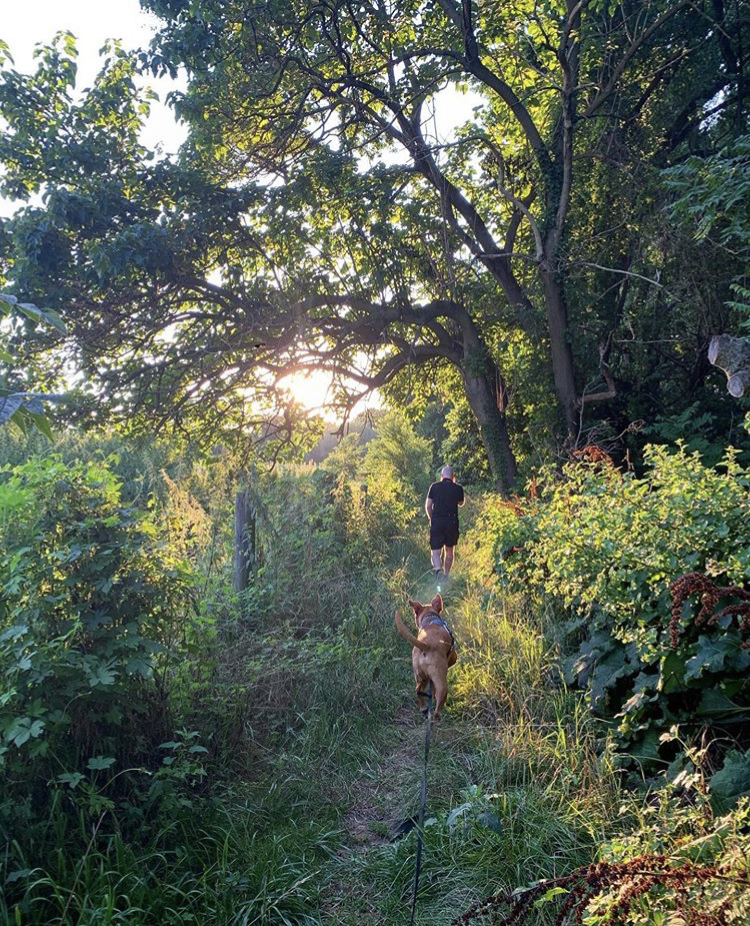
His personality continued to emerge, and Dawn and Mark weren’t sure they’d be able to keep him. “I would say that there’s probably a lot of reactive dog owners who feel that they have the wrong dog,” Dawn said. “And I would say that they probably don’t, they just haven’t figured out the language yet, but at the same time, I’ve been there. I felt the same way. We were worried that if we couldn’t figure it out, we’d have to find Odin a new home because we weren’t the right home for him.
Then Odin scared Mark, who had been bitten by a dog the year before. Odin latched onto his arm, tugging. “We thought it was aggression,” Dawn said. “I was like, ‘Oh my god, we have to go put this dog down because he just bit my husband.’ Turns out, he had literally no idea what to do with his mouth. He was so overstimulated and he’s a reactive dog who was like, ‘Oh we’re playing tug now? Let’s play tug REALLY HARD.’”
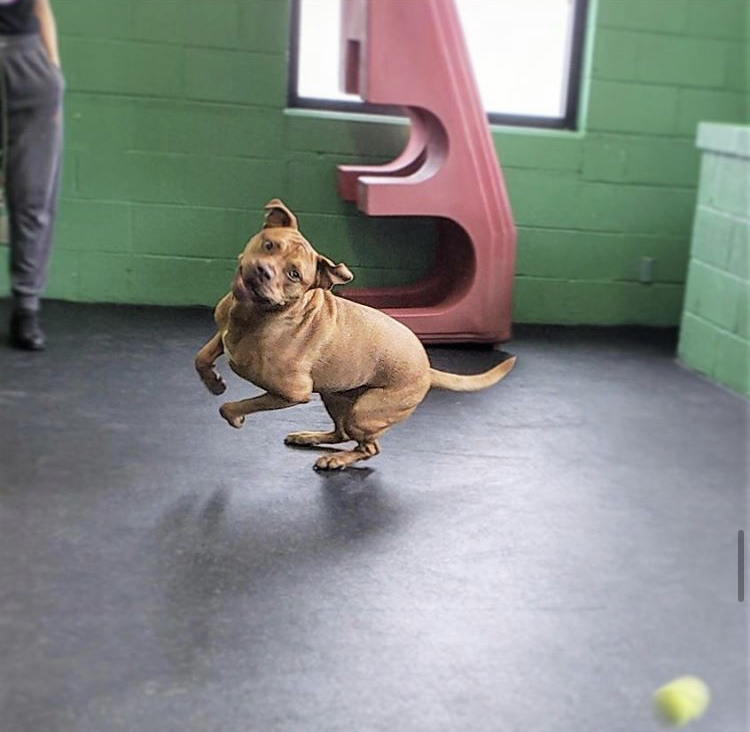
They had some hard discussions and then reached out to Dana Falsetta, a close friend of Mark’s and a dog trainer and then a manager with Philly Unleashed. “She fielded a lot of phone calls from us at 10, 11 o’clock at night in tears, because we just didn’t know what to do,” Dawn shared. “I wasn’t a trainer yet. I had no idea. I was reading all of the books, reading all of the articles. It was a very intense year.”
Dawn also started to use her day job as a lens to consider Odin’s behavior. She’s an occupational therapist, who owns an outpatient mobile practice called Aurora Independence, and she’s opening a home health agency called Aurora Living Solutions. “I use the therapeutic use of everyday activities to help people navigate their world as independently as possible,” Dawn explained. “Generally, it’s after people have injuries or cognitive deficits, and that helps me meet them where they are, which sounds familiar to dog training, and help them confront obstacles, and do it as independently and as individually as you can for that client. Their goals are different than my goals which are different than their parents’ goals which are different than their siblings’ goals.”
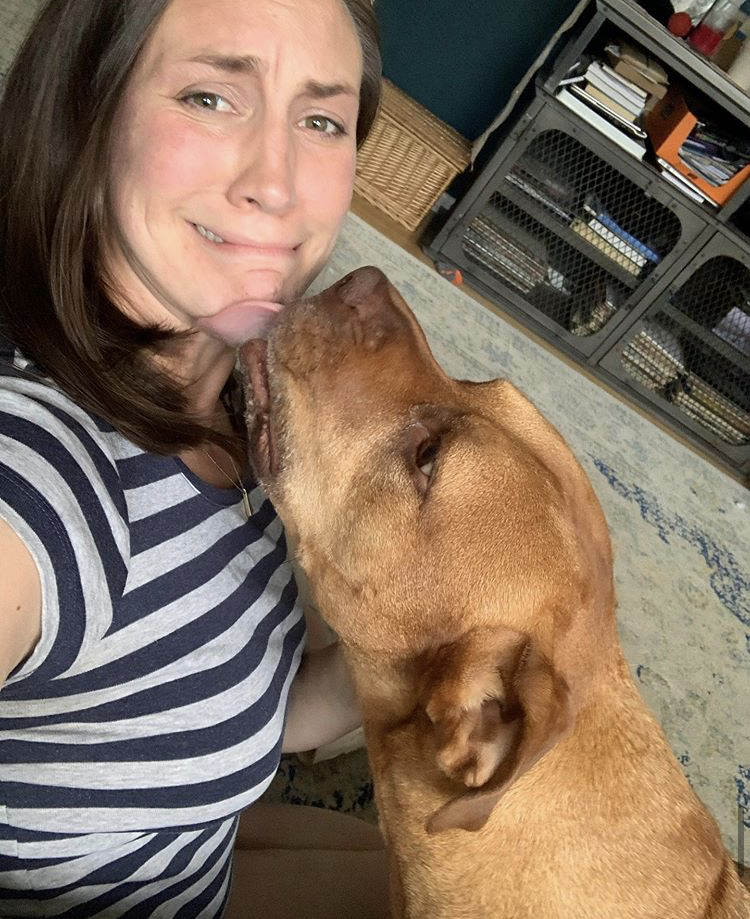
Dawn has experience with Applied Behavior Analysis (ABA) in regard to autism, intellectual disabilities, and sensory processing disorders, and she started to examine Odin with that behavioral understanding. “I started looking at Odin with my OT eyes, and I was like, ‘You have a sensory need right now,’” Dawn shared. “At the time, I didn’t quite realize it was enrichment and long leads and decompression walks and all of these key phrases that the dog training world uses, but at one point I looked at him and I was like, ‘What is your sensory need? Why are you seeking so much input?’ Because he needed input. He needed touching, he needed pulling, he needed tugging, he needed chewing, you name it, this dog was like, ‘I don’t know what I need!’ That’s what helped me figure out and change my mindset of, this dog needs something, I can provide it. Let me figure out how to do that properly. That’s how we started working forward with Odin.”
She was also relieved to have a label for Odin’s behavior: reactivity. “I liked having the name ‘reactive’ for Odin because it finally made sense,” Dawn said. “Because to me, it just means that they overreact to something. Whether it’s good bad or ugly, their reaction is just too much, or a little over threshold, if you want to call it that. When Odin loves something, he will knock it over and lick it to pieces because he loves it. So we tend to think reactive is just bad, but in my mind, reactive is just that you’re overreacting to something. So it’s that friend that just loves everything, and you’re like, ‘Chill,’ and it’s my dog who’s like, ‘I love dogs. I HATE German Shepherds. It’s like, ‘Whoa, where’s the regulation?’ There is none. For me, a reactive dog doesn’t have the ability to regulate themselves, and when they’re left to make their own decisions, they’re probably going to make a bad one, and I’m okay with that. It wasn’t until later that I realized ‘Oh, a lot of people do associate ‘reactive’ with ‘aggressive’. I’m from a different world where I didn’t think about that. I just felt so good that I finally had an answer.”
Dawn expanded her professional interests when she became a dog trainer herself with Philly Unleashed in 2018. She started assisting with classes, and now she’s teaching Level 1 & 2 and private lessons. As she entered the dog world and started learning more about reactivity, she revisited the Instagram account, Odin_Pup, that she’d created soon after bringing Odin home.
She found other dogs who had similar issues to Odin and decided to share her story. She also began sharing accounts she found helpful with her clients. “I actually don’t remember how I got into it,” Dawn said. “I want to say I saw a random hashtag, and suddenly, I was like, ‘Whoa, here’s all of these other dogs going through this. This is fantastic. Maybe I’ll start sharing my story, too.’ That was around the time I was starting to get involved in dog training. Then I realized I was starting to recommend some accounts to my clients. And I still do it. … It’s nice to see that other people also have the same problems. From the owner side and from the trainer, you’re not alone.”
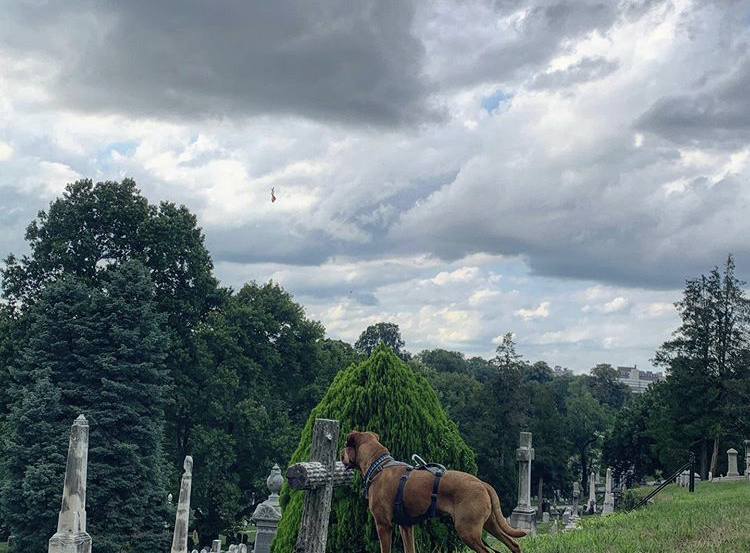
There have been other issues in handling Odin, including the injuries Dawn’s gotten, which include a concussion, a chronic ankle instability, and damage to her hand. She’s much more careful about where and how she walks Odin and she brings that experience to her clients as well. “I understand that walks are very important for dogs,” Dawn said. “I would never tell you don’t walk your dog. But there were times when I realized I cannot walk this dog because I am injured or I will get more injured or for this client, you’ll get a brain injury if you continue to walk this dog. You have a yard. Let’s figure out a different way to do this while we’re working on leash skills. … Sometimes you need to take stock of what’s going on, figure out the priorities and figure out, are you walking because you think you’re supposed to or are you walking because you have to? And how can we reach your goals and keep your safety at the same time? There was a point where it just wasn’t safe. I couldn’t walk Odin.”
And she’s had to work through the embarrassment that followed. “For me, a lot of it is framing it inside of my own head,” Dawn shared. “I had to get over caring about what other people thought. I have been yelled at by people that tell me I have an aggressive dog. I’ve been kicked out of dog parks before when I didn’t quite realize at the time that Odin wasn’t dog park material. But he goes to doggy daycare. He has his friends. He does great. I realized that this is our journey together. This is our language. This is what works for us. I don’t care what other people think. I don’t care about when people think I’m being ridiculous when I relate it to children because I’ve gotten push back on that in the past. I’m like, it just helps my brain process what’s happening with this animal that’s in my life, that I’m never getting rid of, that I want to be successful and I want to enjoy. Finding the positives, focusing on the joy, and focusing on the good things.”
A big part of management and finding the good things was figuring out the right tools. “If someone is presenting a behavior, it’s because they’re looking for something or trying to avoid something, so you just have to figure that out,” Dawn said. “Each dog is different, and one dog might be terrified by a cue that another dog might find the best thing ever.”
Dawn calls it a reactive dog diet. “What works for me might not work for you,” Dawn explained. “Every dog is going to have something that’s a little different.”
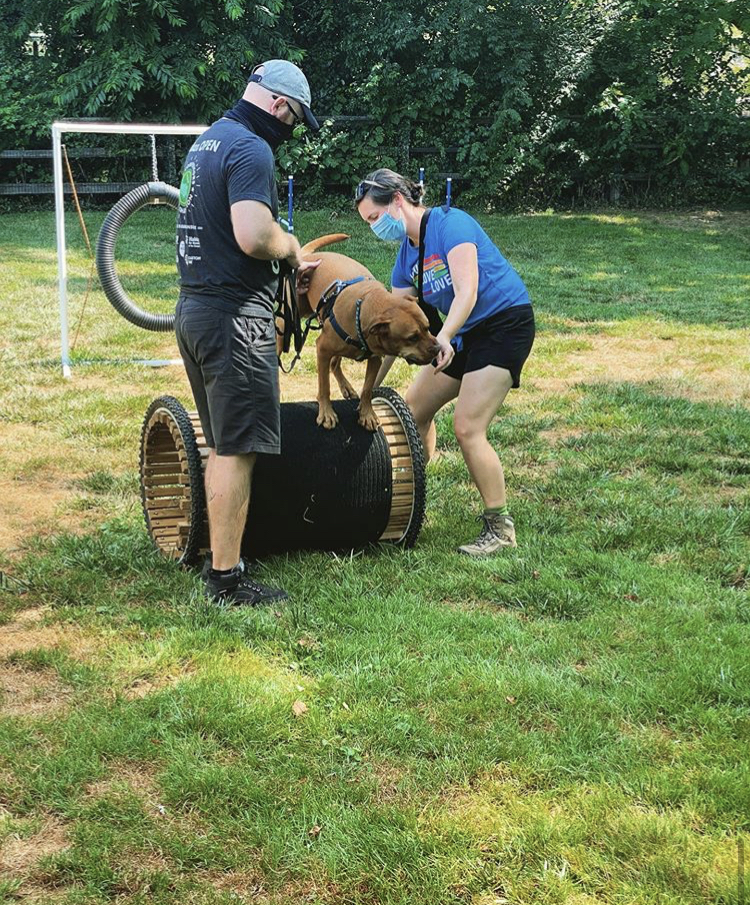
She started with positive reinforcement training, which can even be full of conflicting information. Are slip leads never okay, or is it all right to withhold treats if the dog doesn’t find treats reinforcing? She describes positive reinforcement as adding something that will encourage a behavior in a way that is a reward to the dog, or something they want to work for. In conjunction with that, they added in training elements to help their communication with Odin.
Positive reinforcement training means offering a reward to a dog for completing a task. The dog must find the reward worth working for.
They started agility, which also helped with communication. “Agility [was a] huge positive, interaction with Odin,” Dawn said. “Loved it, worked great. Food was super negative during agility because he couldn’t focus. It almost became such a distraction that it was no longer reinforcing. So with positive reinforcement, you have to figure out what’s the good thing you’re adding to encourage that behavior to happen.”
Agility is a sport where dogs must complete obstacles within a set amount of time.
They added enrichment. Enrichment uses a dog’s natural behaviors, like letting them use their nose or run, in a productive way. “Have you ever seen a dog chewing a bone or licking something and they look high because they’re meditating?” Dawn asked. “They’re chilling out. They’re cool. They’re relaxing. Those kinds of dogs just tend to go to sleep after.”
Enrichment engages a dog’s natural behaviors, like sniffing, running, digging, and chewing, to help them decompress and relax. Here’s a great explanation of enrichment.
They utilized capturing. “We use it a lot because Odin likes to chase our cats,” Dawn shared. “He does not want to hurt them but he’s 80 pounds and they’re 10, so it can happen. I use capturing a lot when he looks at the cat and doesn’t go for the cat. … Everything good thing that Odin does that we like, he gets a treat for it.”
Capturing means marking (with a word or clicker) a behavior that a dog offers without being asked. When we “charge” a clicker or word like “yes”, then when a dog hears that sound, they will know that they did something correctly, and a reward is coming. This will encourage them to continually offer those same behaviors naturally without being prompted, so they will sit instead of jump, for example.
They also found training tools that helped manage his behavior:
Dawn recommends additional tools that may help when used with training cues, like:
Odin was not able to use a head halti because he doesn’t like something around his face.
The Easy Walk can cause some orthopedic shoulder issues, which does not make them ideal for stronger pullers.
They also use a muzzle for Odin for managed needs, like going to the vet. “Muzzles for me originally brought up that embarrassment,” Dawn said. “I was like, ‘Oh, I have to protect people from my dog. That’s so embarrassing. People are going to think he’s evil.’ He’s not. He’s got his particularities but he’s not an evil dog. So I struggled with it at first. And my muzzle game is probably pretty weak. I think part of it is this whole judgment thing. I really want this dog that loves people and just goes with the flow. I’m still working on it. I do not have that dog. For clients, a lot of them are shocked when I say, ‘Hey, you should muzzle train your dog.’ They’re like, ‘Why? My dog’s so sweet.’ And I’m like ‘Yeah, I know, but if you’re going to take them to the woods, and they like to eat poop, a muzzle is a way to have them not eat poop, and you don’t need to worry about them quite as much.’ People don’t always think about it in that sense. It’s also safety for the dog.”
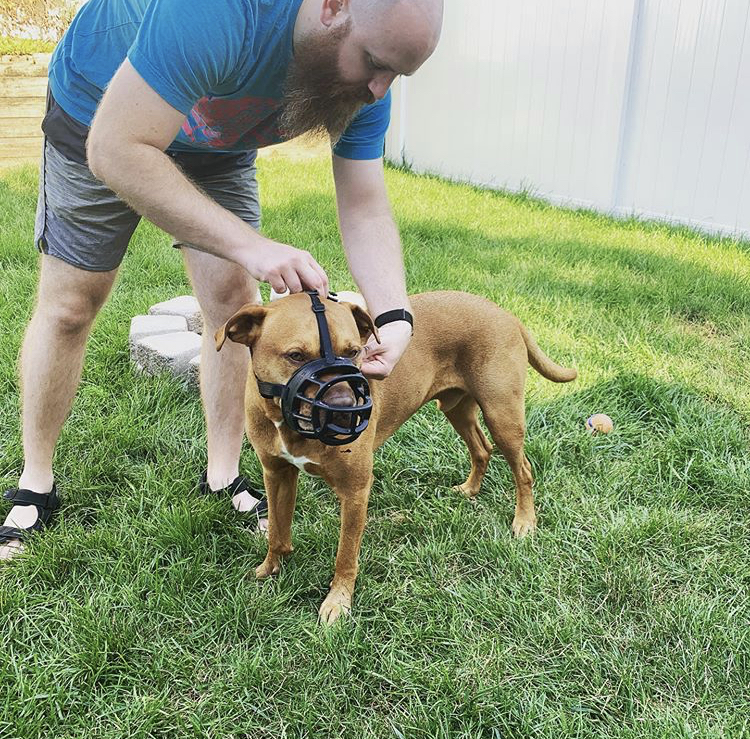
Years later, with training and medication and time, Dawn has found that Odin is a much different dog now. “He’s much calmer,” Dawn explained. “I actually think medication helped him a lot. Part of the reason he was so over the top was that his brain just could not shut off. We’ve noticed in the last year and a half since he started doggy Prozac, the biggest difference is that he can actually settle. For a good three, three and a half years, he was settling, but his brain wasn’t. His eyes were still going. His little eyebrows were so expressive. … For us, there’s a lot more calm because we did all of the training and medication was the last thing. For some reactive dog owners, I would recommend medication a whole lot sooner. I think we would have had a balanced household much quicker if I had realized medication was something Odin needed.”
Dawn’s advice for other owners with reactive dogs includes thinking about the methods they’d like to use. “I would say first, focus on your mindset,” Dawn shared. “Honor your dog. Where are they in the journey that you’re currently on? And secondly, get a trainer. Get one early. Don’t try to do it on your own. I think finding a trainer is really important. You should probably Interview your trainer first. What’s their training method? Are they positive reinforcement? Do they believe in prong collars? Do they believe in e-collars? How do you feel about it? Do they have clients that they’re willing to share testimonials with that you can talk to personally and not just a written one. Maybe even having a conversation is important. Can you see video of a dog trainer actually training? Sometimes you get into a training class and you realize that you don’t like their style. You don’t like how they communicate. You don’t like how rough they are or how sweet they are. Can the trainer actually do the thing you’re trying to get your dog to do with your dog?”
How has your dog embarrassed you? Sound off in the comments below or send me an email at info@telltaildogtraining.com. Telltail Dog Training offers group classes and private in-home lessons in the Little Rock area, along with training walks for current clients. Find Telltail’s podcast here, or find additional information on Instagram, Facebook, and YouTube.
